Deep within the lush canopies and humid understories of the world’s rainforests dwell some of Earth’s most magnificent creatures. These jungle giants have evolved remarkable adaptations to thrive in these complex ecosystems, becoming the undisputed rulers of their domains. From massive mammals to enormous reptiles, these 13 colossal creatures demonstrate nature’s tendency toward the spectacular in tropical environments. Join us as we journey through the world’s rainforests to discover these impressive species, their unique characteristics, and the challenges they face in our rapidly changing world.
The Mighty Jaguar Apex Predator of the Americas
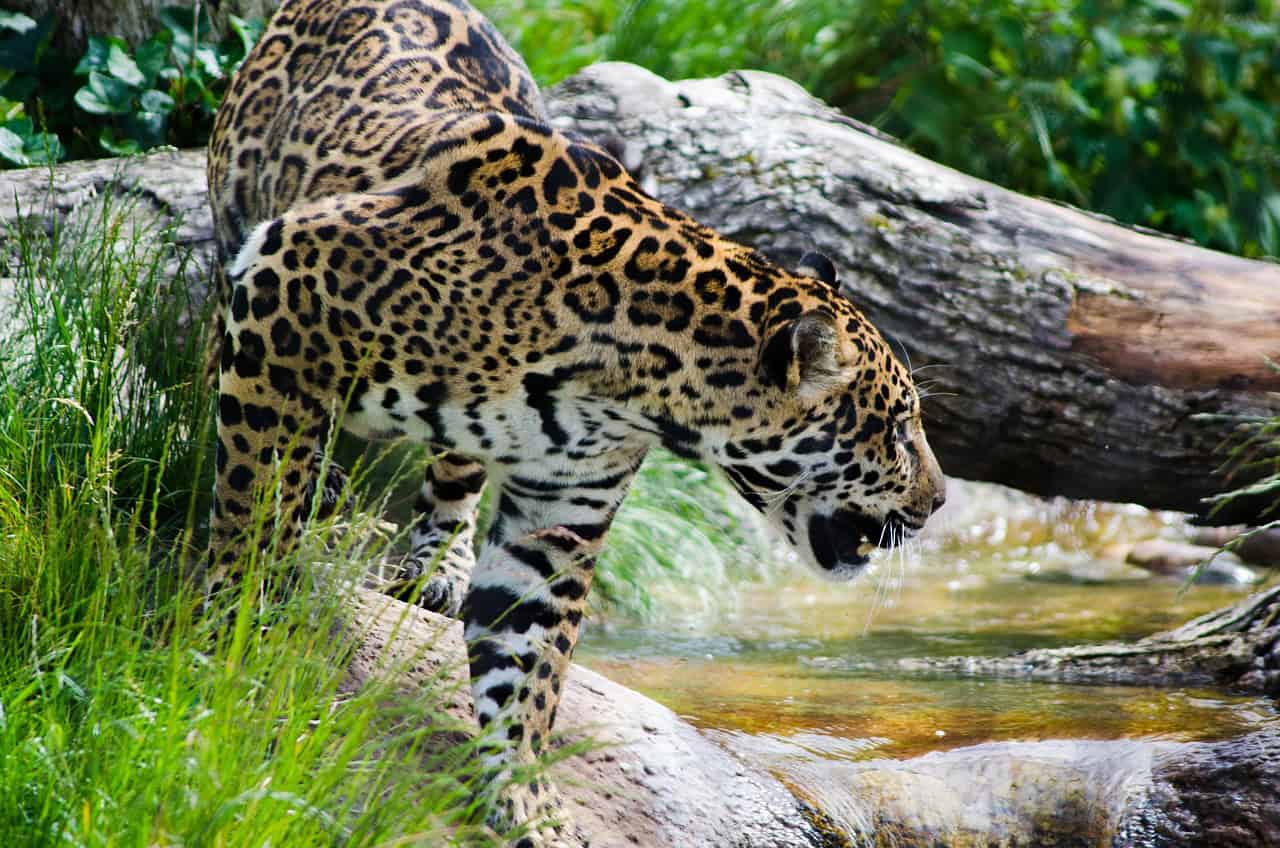
The jaguar (Panthera onca) reigns supreme as the largest cat species in the Americas and the third-largest worldwide. These muscular predators can weigh up to 300 pounds with powerfully built bodies that enable them to take down prey much larger than themselves. Unlike many cats, jaguars are excellent swimmers and thrive in the flooded forests of the Amazon Basin. Their distinctive rosette-patterned coats provide perfect camouflage among the dappled light of the rainforest floor, while their exceptionally powerful bite—strong enough to pierce turtle shells and crocodilian armor—sets them apart from other big cats. Despite their formidable presence, jaguar populations have declined by an estimated 20-25% over the past three generations due to habitat loss and fragmentation, making conservation efforts increasingly urgent for these rainforest giants.
Asian Elephants Engineers of the Forest
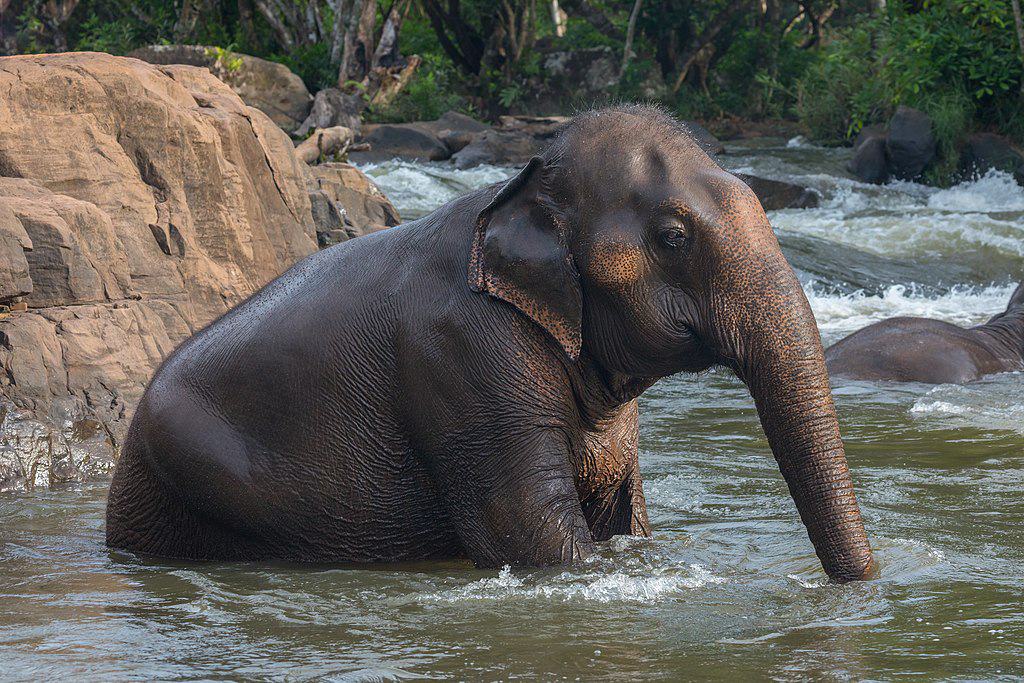
The Asian elephant (Elephas maximus) stands as one of the most impressive architects of Southeast Asian rainforests. Weighing up to 5.5 tons and reaching heights of 11 feet at the shoulder, these magnificent mammals literally shape their environment. As they move through dense jungle, they create pathways that other animals utilize, disperse seeds through their dung, and maintain forest clearings that support diverse plant life. Unlike their African cousins, only male Asian elephants typically develop tusks, though these are often shorter. Their highly dexterous trunks contain over 40,000 muscles, allowing them to perform tasks requiring extraordinary precision. These intelligent creatures maintain complex social structures and demonstrate problem-solving abilities comparable to great apes. Unfortunately, Asian elephant populations have dropped by more than 50% in the last three generations, with habitat loss and human-elephant conflict presenting significant conservation challenges.
Green Anaconda The World’s Heaviest Snake

The green anaconda (Eunectes murinus) slithers through the waterways of South American rainforests as the heaviest snake on Earth. While not the longest snake (that title belongs to the reticulated python), female anacondas can reach weights exceeding 500 pounds and lengths of over 25 feet. These massive constrictors spend much of their lives in or near water, perfectly adapted with eyes and nostrils positioned on top of their heads to allow breathing while mostly submerged. Their olive-green coloration with black oval patches provides excellent camouflage in murky waters. Anacondas are non-venomous, relying instead on their immense strength to constrict prey as large as capybaras, caimans, and occasionally jaguars. Their elastic jaws and stretchy skin allow them to consume prey whole, after which they may not need to feed again for weeks or even months. Despite numerous myths about their man-eating tendencies, documented attacks on humans remain extremely rare.
Gorillas The Gentle Forest Giants
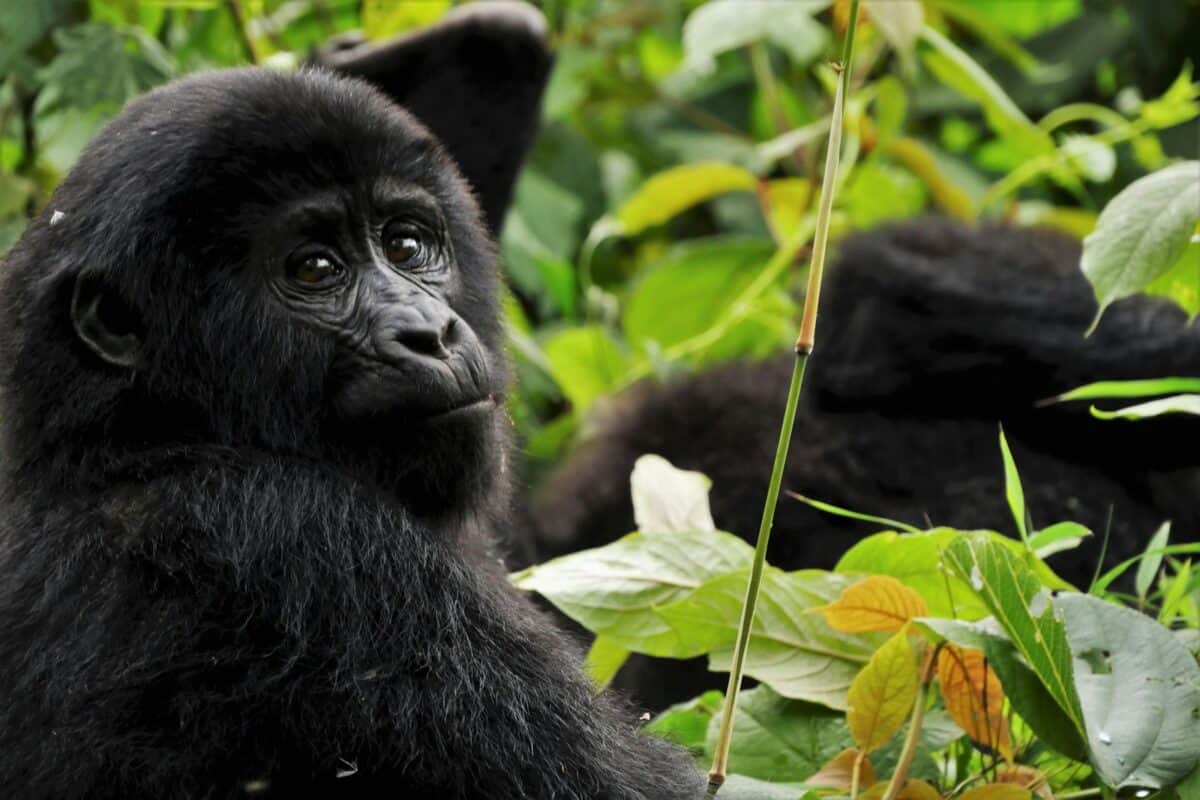
Gorillas (Gorilla spp.) represent the largest living primates, with silverback males of the eastern lowland subspecies weighing up to 440 pounds and standing over 5.5 feet tall when upright. These impressive great apes inhabit the tropical forests of central Africa, where they live in cohesive family groups led by dominant silverback males. Despite their intimidating size and strength—a gorilla can bench press approximately 1,800 pounds—these are largely gentle herbivores that spend much of their day foraging for vegetation. Their diet consists primarily of leaves, stems, fruits, and occasionally insects. Gorillas share approximately 98% of their DNA with humans, displaying remarkable intelligence, tool use, and complex emotional lives. All gorilla species are critically endangered due to habitat destruction, poaching, and disease. The mountain gorilla represents a rare conservation success story, with numbers slowly increasing due to intensive protection efforts, though fewer than 1,000 individuals remain in the wild.
Harpy Eagle Winged Predator of the Canopy

The harpy eagle (Harpia harpyja) dominates the rainforest canopy as one of the most powerful birds of prey on Earth. With females weighing up to 20 pounds and sporting a wingspan reaching 7 feet, these raptors possess talons comparable in size to grizzly bear claws—measuring up to 5 inches long. These massive birds are perfectly adapted for hunting in dense forests, with broad wings that allow for maneuverability between trees and incredible speed over short distances. Their distinctive double-crested head feathers can be raised to form an intimidating facial disk, while their exceptional vision enables them to spot prey through thick foliage. Harpy eagles primarily hunt tree-dwelling mammals, including monkeys and sloths, occasionally taking animals weighing up to their body weight. A mating pair requires over 100 square kilometres of pristine rainforest to support their hunting needs, making them particularly vulnerable to deforestation. Though once widespread throughout Central and South America, harpy eagle populations have declined dramatically, with the species now extirpated from much of its former range.
Gaur The World’s Largest Wild Cattle

The gaur (Bos gaurus) stands as the largest wild bovine species, with bulls reaching weights of 3,300 pounds and shoulder heights up to 7 feet. These magnificent creatures inhabit the rainforests and forested hills of South and Southeast Asia, where their massive frames create a truly impressive sight. Gaurs possess distinctive dorsal ridges along their backs and massive shoulder humps that give them an unmistakable silhouette. Both sexes develop horns that sweep upward and inward, though males have thicker bases. Despite their enormous size, gaurs are surprisingly agile and can run at speeds of up to 35 mph through dense forests. They typically form herds of 8-11 individuals led by a dominant female, though old bulls often become solitary. Gaurs primarily browse on leaves, stems, and flowers supplemented with grasses, demonstrating important seed dispersal functions within their ecosystems. The species is classified as vulnerable, with populations declining approximately 70% during the 20th century due to habitat conversion, hunting, and competition with domestic livestock.
Saltwater Crocodile Ancient Reptilian Giant

The saltwater crocodile (Crocodylus porosus) represents one of the most formidable predators on Earth and the largest living reptile. Males can reach lengths exceeding 20 feet and weigh over 2,200 pounds, though such gigantic specimens have become increasingly rare due to hunting. These ancient creatures inhabit the mangrove swamps, river mouths, and coastal waters stretching from northern Australia through Southeast Asia to eastern India. Despite their name, they thrive in freshwater environments, including rainforest rivers and swamps. Saltwater crocodiles possess the strongest bite force ever measured in a living animal—up to 3,700 pounds per square inch, more than twice that of a great white shark. Their ambush-hunting strategy has remained essentially unchanged for millions of years, utilizing extraordinary patience as they wait partially submerged for unsuspecting prey. Unlike many reptiles, saltwater crocodiles demonstrate complex behaviours, including tool use (balancing sticks on their snouts to lure nesting birds) and sophisticated parental care. While once heavily depleted by hunting, protection efforts in Australia have allowed some populations to recover substantially.
Giant Anteater Specialized Insect Hunter
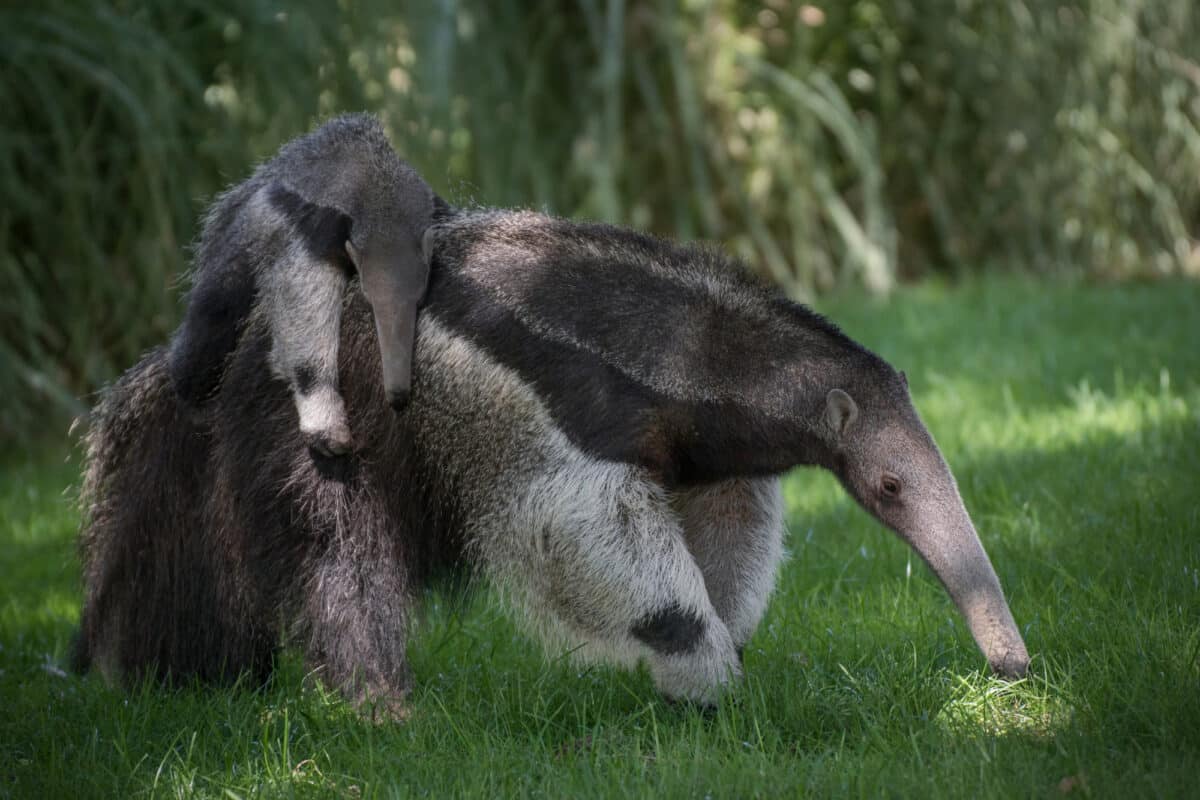
The giant anteater (Myrmecophaga tridactyla) may not match some rainforest giants in weight, but at over 7 feet from nose to tail, these remarkable mammals command attention in the forests of Central and South America. Their most striking feature is undoubtedly their elongated snout housing a specialized 2-foot-long tongue that can extend and retract up to 150 times per minute when feeding. This remarkable adaptation, coated with sticky saliva, allows them to consume up to 35,000 ants and termites daily. Giant anteaters possess enormously powerful forearms equipped with 4-inch claws so specialized for digging that they walk on their knuckles to protect them. Despite their slow, shambling gait, these animals can gallop briefly at speeds up to 30 mph when threatened. Contrary to popular belief, giant anteaters have excellent smell but poor eyesight, and they can be dangerous when cornered, capable of fighting off even jaguars with their powerful claws. The species is classified as vulnerable, with populations declining due to habitat loss, vehicle collisions, and hunting.
Orangutan Arboreal Engineers of Asia
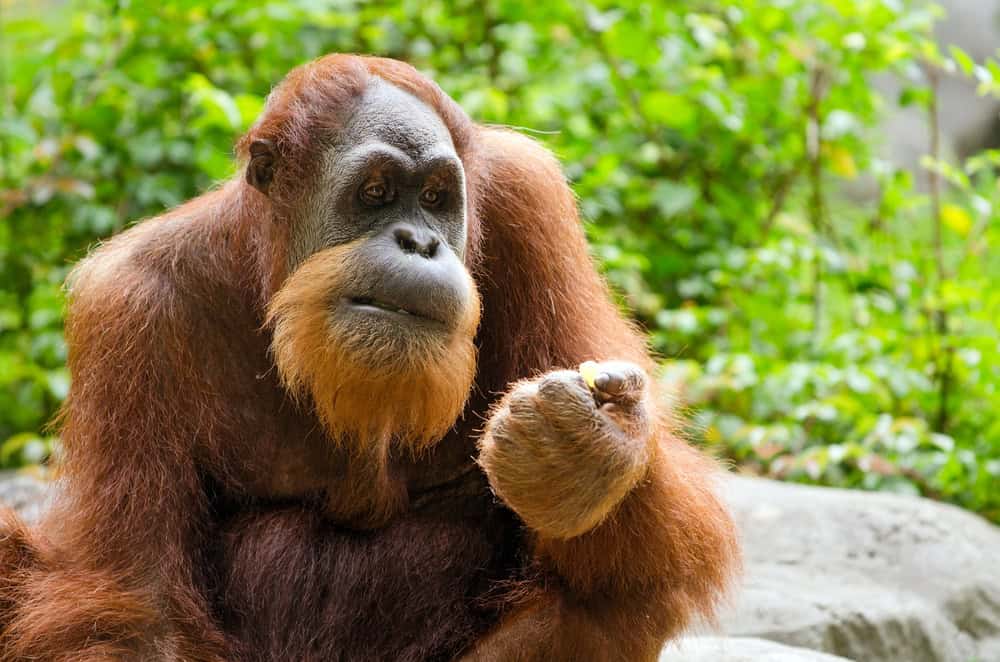
Orangutans (Pongo spp.) stand as Asia’s only great apes and are among the most intelligent creatures in the rainforest canopy. Adult males are truly imposing, weighing up to 220 pounds with an arm span reaching 8 feet—longer than their standing height. These predominantly arboreal primates spend over 95% of their lives in the trees of Indonesian and Malaysian rainforests, where they construct elaborate sleeping nests each night. Orangutans possess the longest childhood of any non-human animal, with offspring remaining dependent on their mothers for up to 8 years while they learn the complex foraging skills necessary for survival. Their remarkable intelligence manifests in sophisticated tool use, medicinal plant utilization, and cultural transmission of learned behaviors between generations. Perhaps most impressive is their problem-solving capacity, with studies demonstrating their abilities to use water displacement principles and spontaneously fashion tools for specific tasks. All three orangutan species (Sumatran, Bornean, and the recently discovered Tapanuli) are critically endangered, primarily due to habitat destruction for palm oil plantations, with populations declining by more than 80% over the past 75 years.
Giant Otters Social Hunters of Amazon Waters

Giant otters (Pteronura brasiliensis) rule the waterways of Amazon basin rainforests as the world’s largest otters, reaching lengths of up to 6 feet and weights of 75 pounds. These highly social carnivores live in family groups of 3-10 individuals that cooperatively hunt fish, their primary prey. Unlike many rainforest giants that rely on stealth, giant otters are notably vocal, utilizing a complex repertoire of sounds for coordination and communication. Each individual possesses a unique throat pattern, similar to a human fingerprint, which researchers use for identification. Their streamlined bodies and powerful tails make them exceptional swimmers, capable of speeds up to 8 mph and able to hold their breath for 8 minutes during deep dives. Giant otters are among the most territorial otter species, with family groups defending stretches of the river up to 12 square kilometres. Despite being apex predators in their aquatic realm, these magnificent mammals face significant threats from mercury poisoning from illegal gold mining, habitat degradation, and conflict with fishermen. Their population has declined by at least 50% since the 1950s, with current estimates suggesting fewer than 5,000 individuals remain in the wild.
Tapir Living Fossils of the Rainforest

Tapirs (Tapirus spp.) may appear unassuming at first glance, but these prehistoric-looking mammals are true giants of the undergrowth in both Asian and American rainforests. The largest species, the Malayan tapir, can weigh up to 700 pounds and stretch 8 feet in length. These remarkable creatures have changed little in the past 20 million years, earning them the nickname “living fossils.” Their most distinctive feature is an elongated, prehensile snout that functions similarly to a short elephant trunk, allowing them to grasp leaves and fruits with surprising dexterity. Despite their substantial size, tapirs move with surprising stealth through dense forest, leaving behind distinctive three-toed footprints. They are exceptional swimmers, often using rivers and streams as escape routes when threatened. All four tapir species are threatened or endangered, with the critically endangered Malay tapir having declined by more than 50% in just three generations due to deforestation and hunting. These shy herbivores play crucial ecological roles as seed dispersers, with studies showing some rainforest plant species depend almost exclusively on tapirs for propagation.
King Cobra The World’s Longest Venomous Snake
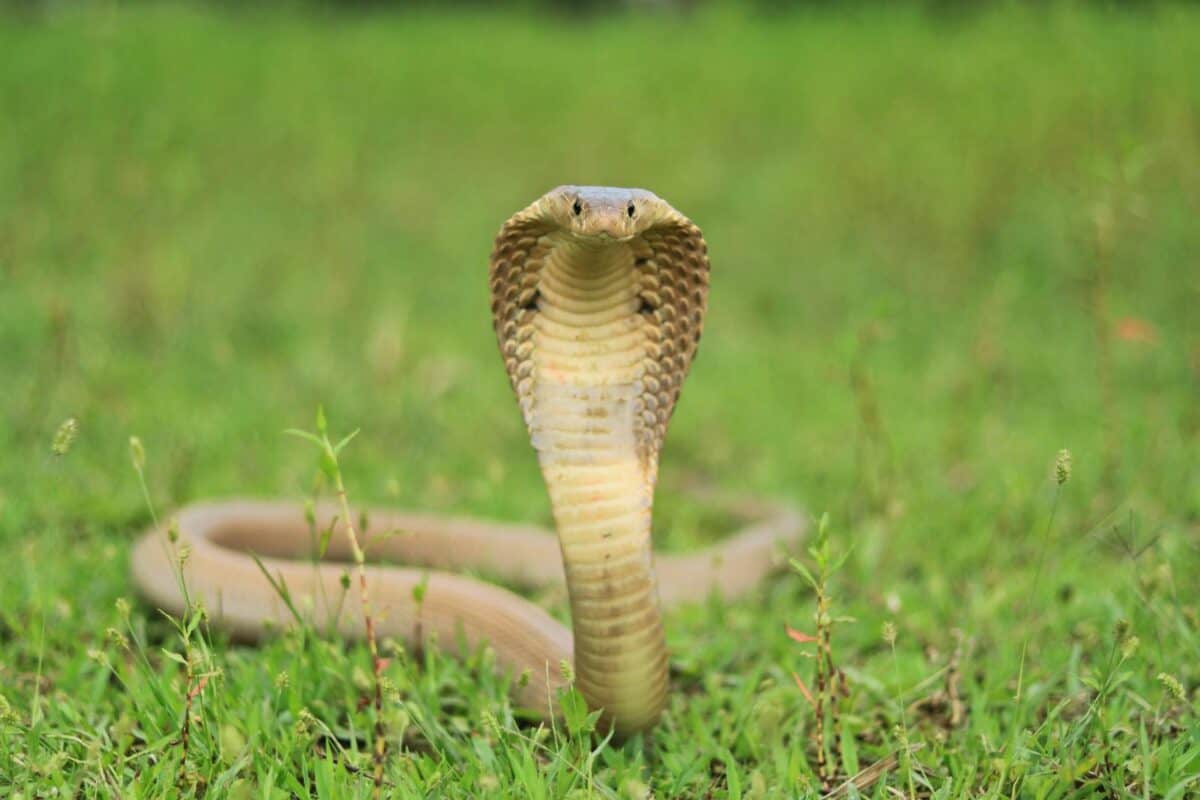
The king cobra (Ophiophagus hannah) commands respect throughout the rainforests of South and Southeast Asia as the world’s longest venomous snake, with specimens reaching lengths over 18 feet. These impressive reptiles possess enough neurotoxic venom in a single bite to kill 20 adult humans or even an elephant, though they typically reserve this potent weapon for securing prey rather than defense. Unlike most snakes, king cobras are capable of delivering multiple strikes during a single attack. Their name derives from their primary diet of other snakes, including venomous species. When threatened, king cobras perform their famous defensive display, raising the front third of their body off the ground, spreading their distinctive hood, and emitting a hair-raising hiss that sounds remarkably like a growling dog. Perhaps most remarkably, these are the only snakes known to construct nests for their eggs, with females remaining nearby to guard their clutches until hatching. Despite their fearsome reputation, king cobras typically avoid human encounters and only strike when cornered. The species is classified as vulnerable due to habitat loss and collection for the wildlife trade.
Goliath Birdeater The Forest Floor Behemoth
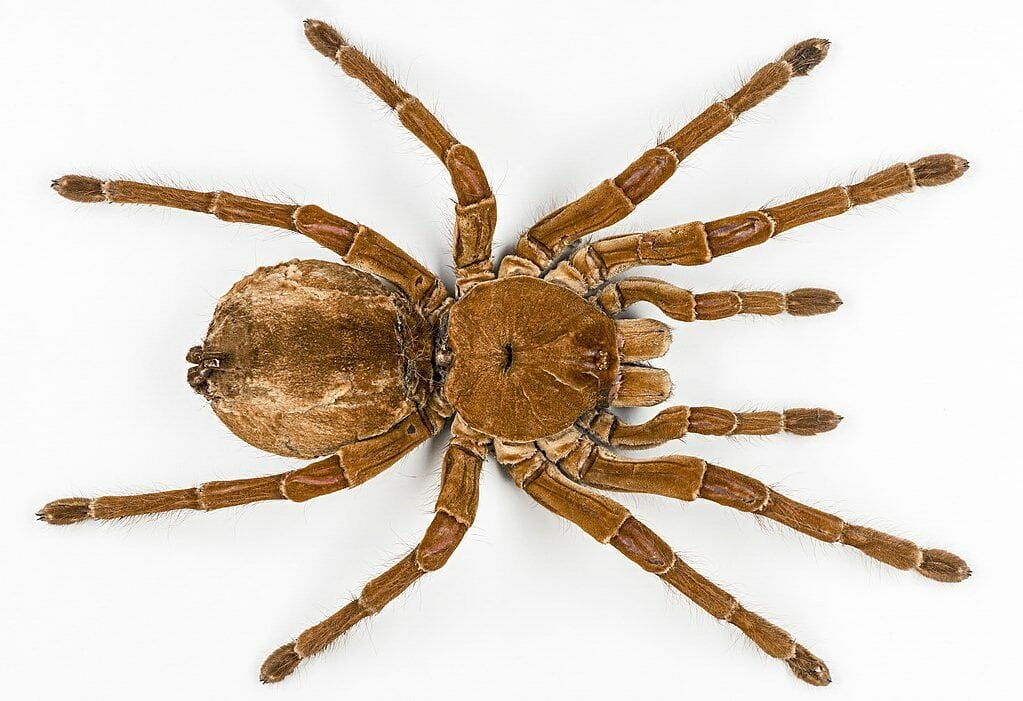
The Goliath birdeater spider (Theraphosa blondi) represents the largest spider by mass in the world, with bodies reaching lengths of 5 inches and leg spans extending up to 11 inches. These impressive arachnids inhabit the rainforest floor in northern South America, where they construct silk-lined burrows or occupy abandoned rodent holes. Despite their name, these tarantulas rarely eat birds, instead subsisting primarily on earthworms, insects, amphibians, and occasionally small mammals or reptiles. Their massive fangs, measuring up to 1 inch long, deliver venom that, while not deadly to humans, causes significant pain and inflammation. When threatened, Goliath bird eaters employ multiple defensive strategies, including striking with their fangs, rubbing specialized urticating hairs from their abdomen that cause intense irritation, and producing a distinctive hissing sound by rubbing their leg bristles together. This sound is audible from up to 15 feet away—an astonishing adaptation for an invertebrate. Female Goliath birdeaters can live up to 25 years in the wild, significantly longer than males, which typically survive only 3-6 years. Though not endangered, these impressive arachnids face threats from habitat destruction and collection for the exotic pet trade.
Conclusion: The Uncertain Future of Rainforest Giants

The magnificent giants that rule our world’s rainforests face unprecedented challenges in the 21st century. Nearly all species discussed in this article have experienced population declines exceeding 30% over recent decades, primarily due to habitat loss, fragmentation, and poaching. These creatures evolved over millions of years to occupy specialized ecological niches, making them particularly vulnerable to rapid environmental changes. Conservation efforts for these species require integrated approaches that address both immediate threats and long-term sustainability, including the establishment of wildlife corridors connecting fragmented habitats. The fate of these jungle giants is inextricably linked to the future of rainforests themselves, which continue to disappear at alarming rates despite their critical importance for biodiversity, climate regulation, and human livelihoods. By understanding and appreciating these remarkable creatures, we gain perspective on what stands to be lost without concerted conservation action, and what incredible evolutionary marvels might yet be saved through our collective efforts to protect the world’s most diverse ecosystems.
- 13 Jungle Giants That Rule the Rainforest - August 11, 2025
- 12 Brainy Beasts That Can Outsmart You - August 10, 2025
- 14 Lizard Species That Can Regrow Their Tails - August 10, 2025

